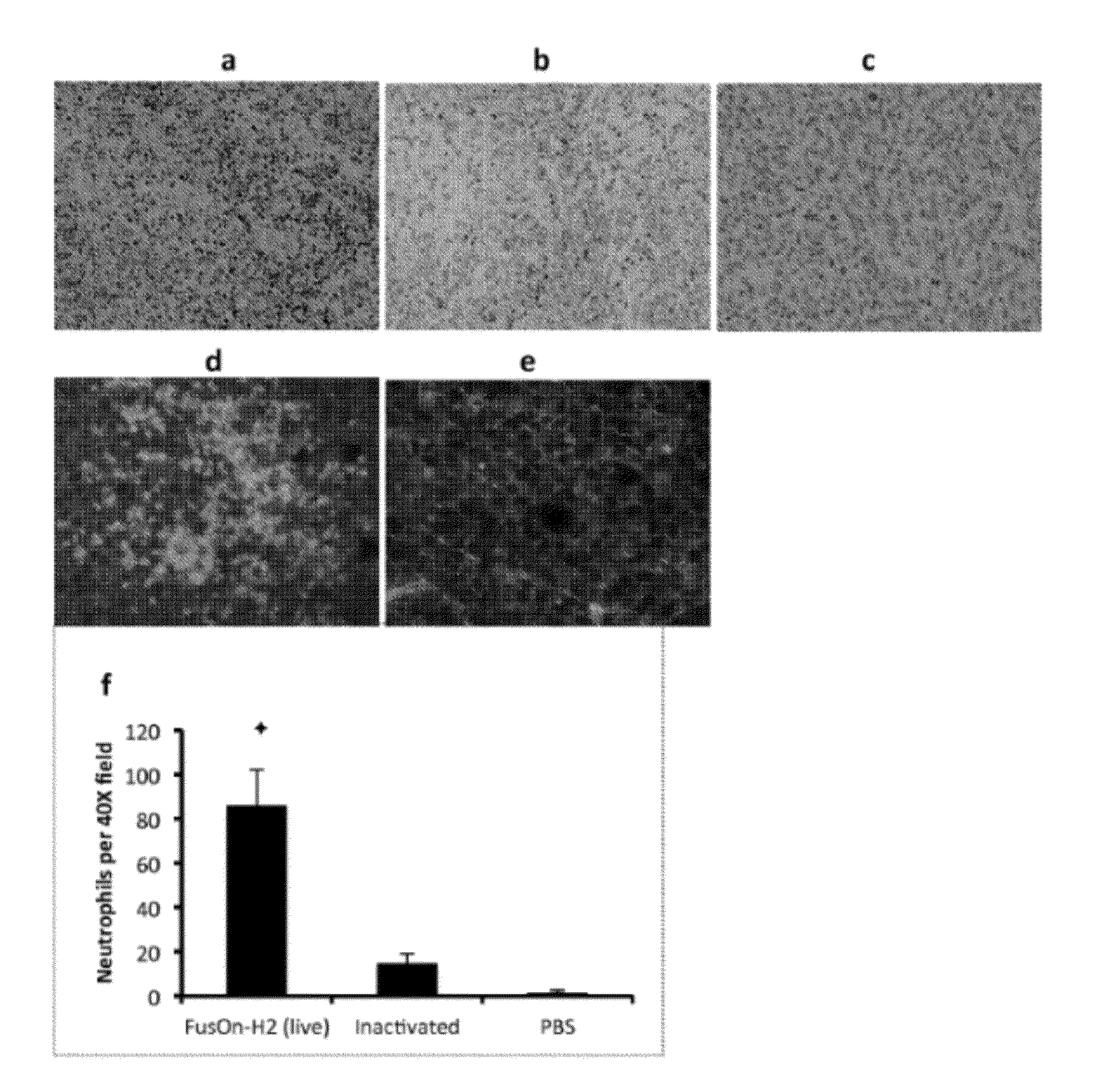Oncolytic Virus as an Inducer for Innate Antitumor Immunity
a technology of innate antitumor immunity and oncolytic virus, which is applied in the field of oncolytic virus as an inducer for innate antitumor immunity, can solve the problems of restricted clinical utility of virotherapy
- Summary
- Abstract
- Description
- Claims
- Application Information
AI Technical Summary
Benefits of technology
Problems solved by technology
Method used
Image
Examples
example 1
Tumor Cells of Different Tissue Origins Show Wild Variation in their Sensitivity to the Replication of Oncolytic HSV FusOn-H2
[0025]FusOn-H2 was characterized in more than a dozen tumor cell lines derived from different tissues of both humans and mice. FusOn-H2 efficiently lysed many of the tumor cells that were screened. However, approximately 20% of the tumor cell lines were resistant to FusOn-H2 replication. In contrast to the fully permissive tumor cells, in which the input virus replicated as much as 100-fold within 48 h after infection, the yield of FusOn-H2 in each of five tumor cell lines representing esophageal carcinoma, cervical cancer, lung carcinoma, melanoma and pancreatic cancer, barely increased over the same time period. In most cases, the oncolytic virus can infect the tumor cells, as indicated by the expression of green fluorescent protein (GFP) gene, which was inserted into the viral genome during its construction. The blockage of virus growth in these tumor cells...
example 2
FusOn-H2 is Effective Against Implanted Tumors Established from Some of the Cancer Cell Lines Resistant to Viral Replication
[0026]As tumor cell resistance to viral replication generally predicts a poor response to virotherapy, these tumor cells were usually excluded from in vivo efficacy evaluation of virotherapy. However, when we elected to include several resistant tumor cell lines in our in vivo experiments, the results turned out to be very surprising. A single injection of FusOn-H2 at 3×106 plaque-forming units (pfu) produced a dramatic antitumor effect, nearly eradicating tumors established from implants of EC9706 cells, which are resistant to FusOn-H2 replication. This effect was essentially duplicated when the virus dose was reduced 50-fold, to as low as 6×104 pfu. Other than tumor disappearance, the animals showed no sign of toxicity during the virotherapy. These observations suggest that FusOn-H2 destroyed the highly resistant tumor cells in vivo through some unique mechan...
example 3
FusOn-H2 Induces Massive Infiltration of Neutrophils into Resistant Tumors
[0027]To account for the unexpected antitumor effects of FusOn-H2 virotherapy, we initially established tumors from EC9706 or 4T1 cells (a murine mammary tumor line that is significantly more permissive than EC9706 to FusOn-H2 replication but otherwise is similar to EC9706 in that they both form tumors aggressively once implanted into mice). After their injection with FusOn-H2, the tumors were harvested at days 1, 2, 3 and 5 for histological examination. The results revealed a massive infiltration of neutrophils in EC9706 tumors treated with FusOn-H2. The inner areas of the tumors were almost entirely filled with neutrophils; the few remaining tumor cells did not appear healthy. Tumor cells near the periphery seemed viable and formed a ring surrounding the inflamed interior. In contrast, infiltrating neutrophils were much less common in EC9706 tumors treated with PBS and were virtually undetectable in 4T1 tumo...
PUM
| Property | Measurement | Unit |
|---|---|---|
| size | aaaaa | aaaaa |
| time | aaaaa | aaaaa |
| resistance | aaaaa | aaaaa |
Abstract
Description
Claims
Application Information
 Login to View More
Login to View More - R&D
- Intellectual Property
- Life Sciences
- Materials
- Tech Scout
- Unparalleled Data Quality
- Higher Quality Content
- 60% Fewer Hallucinations
Browse by: Latest US Patents, China's latest patents, Technical Efficacy Thesaurus, Application Domain, Technology Topic, Popular Technical Reports.
© 2025 PatSnap. All rights reserved.Legal|Privacy policy|Modern Slavery Act Transparency Statement|Sitemap|About US| Contact US: help@patsnap.com



